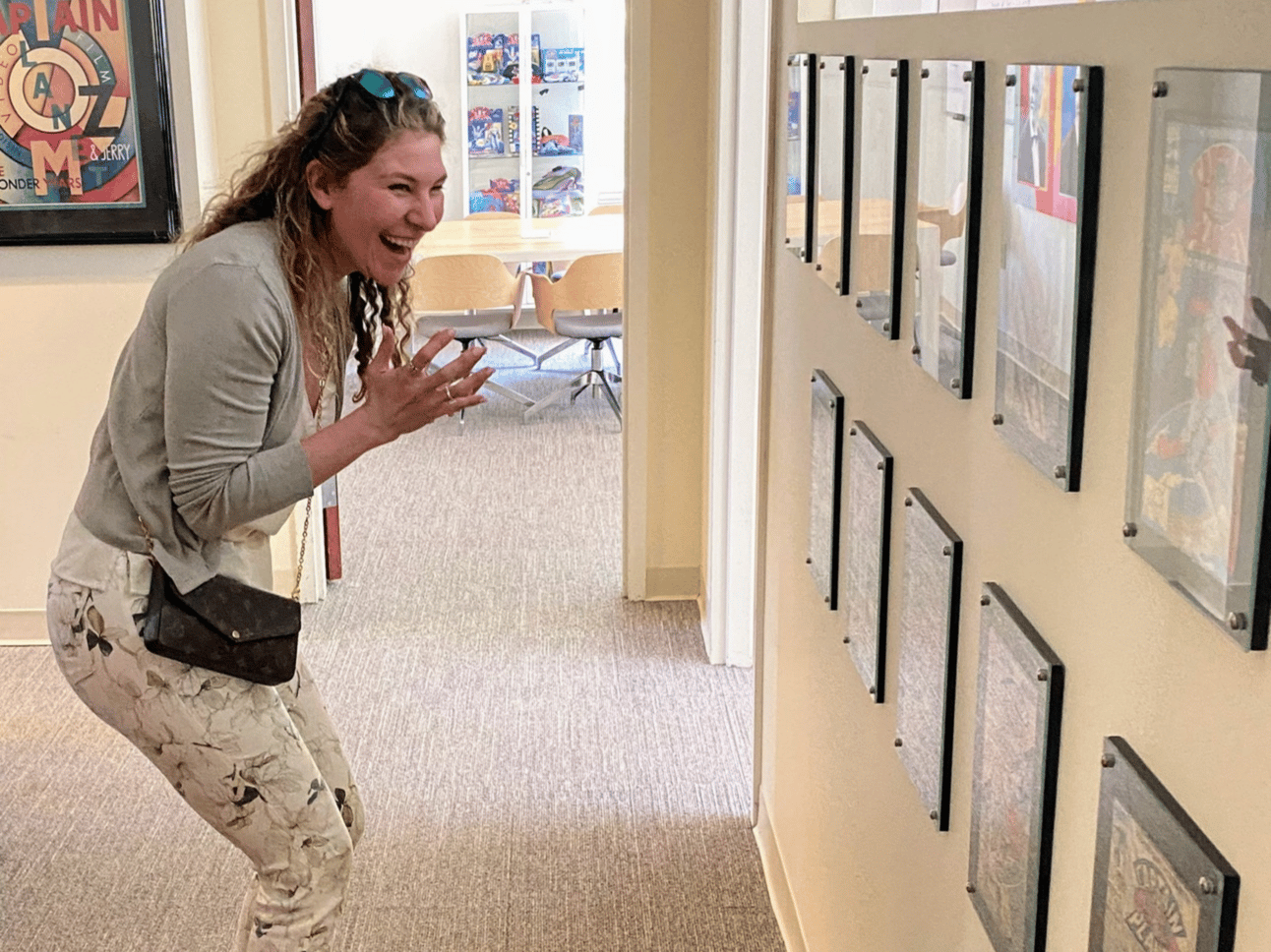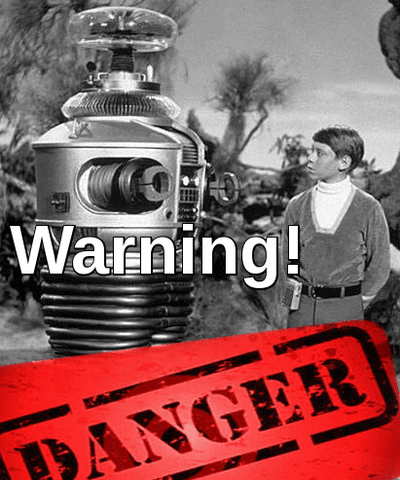- Inside Out Engineering
- Posts
- Too Cool to Care
Too Cool to Care
Why we roll our eyes at enthusiasm and how to build teams that reward it

There’s a moment we all remember.
Someone’s lit up. Over-the-top excited about a project, a performance, a plan.
Their joy is obvious—and loud.
(Like me in the above picture ABSOLUTELY LOSING IT as I fan-girl over the Captain Planet museum)
And what do we do?
We smirk. We stay quiet. Maybe we even label them as “too much.”
But it’s not really about them, is it? It’s about what’s happening in us.
Because witnessing raw enthusiasm, especially when we’ve learned to mute our own, can feel like standing too close to the sun.
Why our brains confuse joy with danger
Here’s what’s wild: enthusiasm activates the same brain systems as vulnerability.
The limbic system—the emotional center of the brain—lights up when we express genuine passion. It also lights up when we’re socially exposed.
So if you’ve ever felt a little cringe watching someone show how much they care? That’s not because you’re cynical. It’s because your brain is wired to protect you from being that visible.
Our nervous system doesn’t differentiate between emotional risk and physical risk all that well. And in cultures where emotional openness is rare or ridiculed, passion can feel dangerous.
So we armor up. We default to cool.
Not because we don’t care—but because we’ve learned it’s safer to pretend we don’t.
Story Time 🙂
A few years ago, when I was getting ready to teach my very first class, I was telling a group of friends about it at a wedding.
I was gushing over the amazing opportunity, how I was about to live my dreams and be able to truly make a difference in the world. That I’d always wanted to be a teacher, ever since I was a child, and now I was finally fulfilling my childhood dreams.
One of my friends tilts her head, looks at me as if I’m something to be studied, and says in her flat, dry tone,
“Wow. I wish I cared about anything the way you care about this.”
At first, I froze. I was so embarrassed - I felt like I was making a huge fool of myself just being excited about this. I should have been a lot more calm, collected - reserved even - telling others about it. Someone was judging me because of my enthusiasm…. again.
But then I really processed what she said.
She wished she could be more excited about things. Not that I should be less excited.
It was absolutely normal for my body to react the way it did - a pure biological response to being extremely vulnerable and visible.
Most importantly, it helped reinforce something for me moving forward - people are inspired by our joy. She saw my excitement and realized she was missing it in her own life.
A conversation that changed how I see team culture
I was speaking to one of my favorite students the other day —brilliant, passionate, just starting in the corporate world —told me something that brought me back to the wedding moment:
“I never thought I’d be excited about data centers. But I’m excited because my team is. I care because they care.”
And there it was again.
Joy is contagious. Emotion is relational.
We think motivation is internal—but neuroscience says otherwise. The mirror neuron system in our brains means we literally echo the emotional states of people around us.
If someone’s lit up, we tend to light up too. Unless we’ve been trained not to.
She went on:
“We keep asking ourselves —is it the work that’s interesting, or are we just around people who make it feel that way? And I think it’s the people.”
That hit me hard.
Because I’ve worked on “cool” tech and I’ve chased innovation.
But the most alive I’ve ever felt in a job wasn’t because of the tech. It was the team.
I came to this realization when I finally fulfilled college Nikki’s dream to work in Nuclear.
See, I became a nuclear engineer because I thought the best way to serve the world was to create sustainable, cost efficient energy. It took me 8 years after college to break into the space but I finally got my chance to work in the nuclear industry.
I had the amazing opportunity to work at a nuclear start up creating small modular reactors (SMRs) along side some of the smartest human beings I’d ever met in my life.
It was the first time I was completely surrounded by people who truly cared as much as I did about the work we were doing. Every one of us knew the part we played in bringing the power plant to life and we poured our hearts into it.
Every day, we came to work and enjoyed being around one another - yes we were tackling sometimes insurmountable problems, but we were constantly laughing and having fun along the way.
Each week had its share of ups and downs but for the first time in my life, I wasn’t getting the “Sunday scaries.” I was genuinely excited to go into the office every day because I knew laughter and joy was on the other side of that door.
Let me be clear… I’m not saying every week was a picnic. Outside of our little office, it was honestly one of the most toxic work places I’d ever been a part of. BUT! We had the power to create a space where we supported each other and found ways to cultivate community which helped us innovate and accomplish incredible things. TOGETHER.
By the end of my time there, I had finally realized I wasn’t excited about my job solely because it was “cool tech”… I was excited about my job because I LOVED the people I worked with.
Why caring matters more than charisma
When people feel safe enough to care, they do more than perform….they create.
According to neuroscience research from Richard Boyatzis and others at Case Western Reserve, when we activate the “positive emotional attractor” (PEA)—a state tied to hope, compassion, and play—we shift into a part of the brain that is open to connection, imagination, and complex problem-solving.
In contrast, when we lead with criticism or try to suppress emotion, we trigger the “negative emotional attractor” (NEA), which narrows our thinking and disconnects us from others.
Translation: Caring isn’t soft. It’s cognitive fuel.
Teams that welcome genuine enthusiasm make room for better problem-solving, stronger collaboration, and more durable motivation.
What it actually takes to build a culture where people care
You don’t need game rooms or branded hoodies.
You need:
A culture where passion is seen as a strength, not a liability
A team that rewards presence, not performance
A norm where curiosity, not sarcasm, is the default response to excitement
If we want innovation, we have to get comfortable with the energy that precedes it: emotion.
Ok so how can I put this into practice?
I’m so glad you asked!
If you’re building culture (or trying to shift one) here’s where to start:
Spot the spark
When someone lights up, name it, and celebrate it!
Try: “You just lit up when you talked about that—tell me more.”
Use the neuroscience
Remind your team that joy isn’t frivolous—it’s productive.
Caring creates the brain state we need for innovation and trust.
Model your own energy
If you’re excited, say so. If something matters to you, show it.
You can’t build a culture of care without someone going first.
Create spaces for stories
Open a meeting with: “Tell me something that made you proud this week.”
Celebrate energy not just outcomes.
When people feel safe enough to care out loud, they change what’s possible!

If this is something you find interesting or know you want to develop your emotional intelligence, follow along with me!
I’ll be telling more stories (of my and other engineers’ experiences) that showcase how I built this skill, stories of how this skill transformed the lives of others like us, along with tips and tools to bring into your life.
And if you’re looking to accelerate your growth in emotional intelligence, book a call with me and we can build a pathway to your goals together!
Book a call: https://calendly.com/nikki-insideoutengineering
Connect with me: https://www.linkedin.com/in/nikki-maginn/


Reply